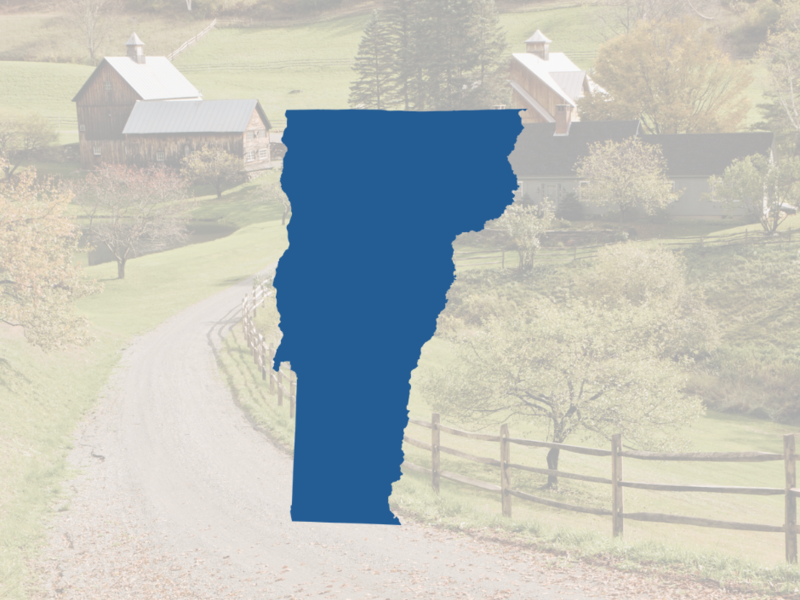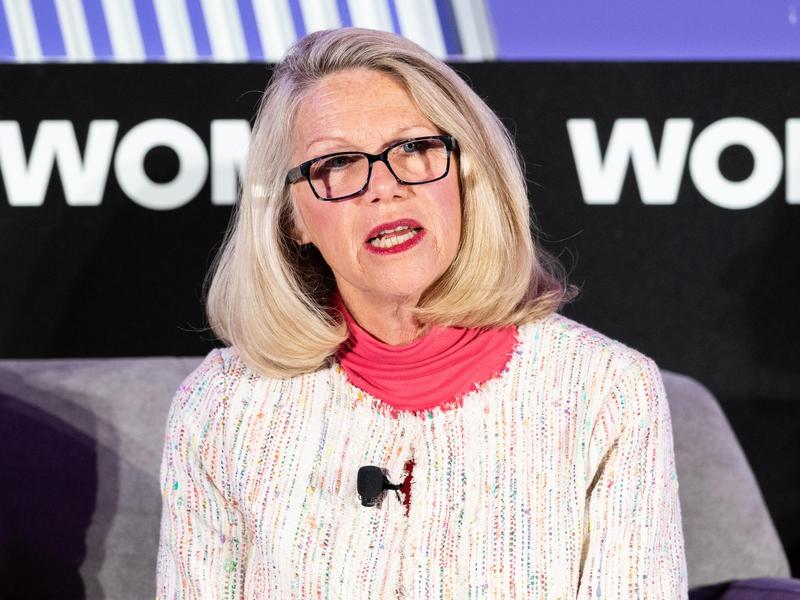
Now that all 50 states have certified their results (save for one House race in New York's 22nd CD), it's a natural time for a reckoning on what transpired down-ballot. The consensus of hundreds of pre-election polls conducted for both parties was that House Democrats were the ones on offense. And yet, Republicans shattered our and others' expectations, gaining at least 11 seats.
Our Electoral and Senate ratings generally performed well, with every race at least "leaning" to one party breaking that direction and Toss Ups breaking to the GOP — save for Georgia, where Joe Biden prevailed and both Senate races are in runoffs.
But in the House, Republicans nearly swept the 27 races in our Toss Up column and won seven races in our "Lean" and "Likely" Democrat columns. These included some big upsets: Republicans held every vulnerable seat in Texas, picked up four Biden/Clinton-won seats in California and even picked up two Miami area seats Clinton had carried by more than 15 points in 2016.
In 2018, Democrats won most of the Toss Ups and even four seats we had rated as "leaning" or "likely" Republican — not entirely dissimilar. But this time, instead of a strong majority, Speaker Nancy Pelosi is left with 222 seats and virtually no margin for error — especially with Reps. Cedric Richmond (LA-02), Deb Haaland (NM-01) and Marcia Fudge (OH-11) set to decamp for administration posts.
The only races where Democrats are still holding out hope are New York's 22nd CD, where Rep. Anthony Brindisi trails by 12 votes pending a court-ordered recanvass of votes, and Iowa's 2nd CD, where Democrat Rita Hart is contesting her GOP opponent's certified six vote margin before the House Administration Committee. Otherwise, 25 of the 27 Toss Ups broke to the GOP.
It's clear that we and others in our frenzied, polling-addicted sphere misjudged the down-ballot environment more than in any cycle in recent memory and must assess the polls' (and our own) blind spots before moving on.
Our approach to rating races in 2020 was the same as in the past: we construct our analysis based on recent election results and trends, publicly available polling and fundraising data, and hundreds of off-the-record conversations with candidates, party committees, outside groups, pollsters, consultants and state-based journalists. And yet, this time much of it led us and others astray.
So, what happened? And what lessons can we draw for 2022? With the benefit of a month to reflect, here are five takeaways from 2020's surprises and three lessons for how we might recalibrate our approach for the next cycle.
Takeaways from 2020
1. Polls that guided both parties' decision-making missed the mark — with remarkable consistency.
Public polls underestimated Republicans up and down the ballot. The final FiveThirtyEight average pegged Biden's lead at 8.4 points; he won the popular vote by 4.5 points. And, FiveThirtyEight had Democrats leading the House ballot by 7.3 points; they won it by 3.1 points.
The same was true of private polls. Throughout 2020, both parties' House campaign committees (the DCCC and NRCC), as well as their affiliated Super PACs (House Majority PAC and Congressional Leadership Fund), invested tens of millions of dollars on hundreds of district-level surveys — and those polls told an even more consistent story of GOP woes than they told in 2018.
Both parties invested accordingly, but the down-ballot anti-Trump "suburban revolt" never materialized on Election Night. With amazing consistency, Republican candidates outperformed private surveys by mid-single digits.
In fact, had Democrats performed exactly five points better on the margin in all 435 districts, every race in our "lean" and "likely" columns would have been correct, Democrats would have won 11 of the 27 Toss Ups, and they would have gained seven seats overall. In other words, polls didn't garden-spray errors in every direction; errors were systemic and fairly precise.
Why were the polls so consistently biased towards Democrats? The most credible theory might be one articulated by analyst David Shor: that for years, there's been a rising correlation between low levels of social and institutional trust, higher support for President Trump, and survey non-response. And, COVID-19 likely exacerbated this partisan non-response bias this year.
To be sure, there were a few outlier polls that got it right. In September, an 1892 Polling survey for the NRCC showed Republican Maria Elvira Salazar ahead of Rep. Donna Shalala (FL-27) 46 percent to 43 percent. And in October, a Public Opinion Strategies poll showed Republican Young Kim leading Rep. Gil Cisneros 47 percent to 46 percent. Both surveys nailed those upsets exactly.
But at the time, neither the NRCC nor the CLF was putting their money behind their talk in press releases. The NRCC spent just $96,000 in coordinated expenditures in FL-27 and $95,000 in CA-39 — a tiny fraction of what it spent in scores of races that both parties' polls (and we) considered more competitive. Had they invested more, we would have been likelier to change our rating.
Overall, the "core four" outside groups — DCCC, HMP, NRCC and CLF — spent $442 million on House races ($226 million by Democrats to $216 million for Republicans). Staggeringly, $196 million of that went to 30 races that didn't turn out to be very close (within five points), including $42 million the parties spent on races Republicans ultimately won by double digits.
The Parties Spent $195 Million on 30 Races that Weren't That Close
Had Republicans detected the true down-ballot dynamics, they could have won the House back. GOP outside groups failed to make a significant investment in a dozen races Democrats won by less than five points, including two they won anyway (CA-39 and FL-27). For example, neither party spent a dime in South Texas, where Rep. Vicente Gonzalez (TX-15) hung on by just three points.
To be fair, no one saw a close race in TX-15 coming. But Republicans never followed through on their early insistence they would spend in Scranton against Rep. Matt Cartwright (PA-08) and abandoned the race against Rep. Lauren Underwood (IL-14) after their least preferred candidate won the GOP primary. Pelosi can thank these missed GOP opportunities for her razor-thin majority.
Republicans Didn't Spend Significantly in 10 Races They Narrowly Lost
2. Much as in 2016, President Trump atop the ballot was actually the best of both worlds for congressional Republicans.
We and other analysts wrote ad nauseum about Trump's drag on House Republicans, especially in suburban districts. But in some respects, the dynamics driving House races were more similar to four years ago than 2018, when Democrats triumphed.
Trump won 74 million votes, unquestionably driving out millions of low-propensity, right-leaning voters who would otherwise never turn out to vote for a more conventional down-ballot Republican in a midterm or off-year election. This wasn't just the case in heavily blue-collar districts, but high-college suburbs as well, where Trump's 2020 vote totals far outpaced his 2016 totals.
But Trump's presence atop the ballot did something else as well. In 2018, the only opportunity for swing voters (including plenty of suburban women) to vent their displeasure with Trump was to vote against a Republican on the congressional ballot. But this time, these voters could vote directly against Trump but still vote for a more conventional Republican they liked.
3. Republicans' recruitment 180 paid big dividends.
In 2018, Democrats ran up the score by recruiting political outsiders, especially women with national security backgrounds, to challenge GOP "insiders." And, they won. Meanwhile, of the 29 House Republican freshmen from 2018, only one wasn't a man and only one wasn't white. But Republicans turned the tables in 2020, and it worked.
Of the 13 Republicans who flipped Democratic-held seats in 2020, all were women and/or minorities. Three are of Cuban ancestry, two were born in South Korea and one was born in Ukraine — allowing them to personalize an anti-socialism message. It helped that these candidates didn't look like Trump or GOP leaders, and many (though not all) sounded quite different from Trump too.
All cycle, the NRCC, Minority Leader Kevin McCarthy and Rep. Elise Stefanik (NY-21) worked local trenches to clear fields for these recruits and, if necessary, help them get through tough primaries. In the end, women and minorities helped Republicans win six districts Trump failed to carry. In January, there will be nine "Biden Republicans" and at most seven "Trump Democrats."
4. Republicans' attacks on "socialism" and "defund the police" were potent - and Democrats didn't do enough to blunt them.
Throughout the cycle, Democrats rolled their eyes at Republicans' incessant ads on these themes. After all, a minuscule number of House Democrats actually identify as "democratic socialists" or have advocated reducing police funding.
But in a presidential cycle with plenty of voters who aren't immersed in the policy weeds, these attacks worked. In one ad, former GOP Irvine Mayor Beth Van Duyne was flanked by seven police officers and accused her opponent, Democrat Candace Valenzuela, of siding with "radicals" who want to "defund the police, end cash bail and release criminals."
Van Duyne ended up beating Valenzuela, who ran as the progressive in the Democratic primary, by a point - even though non-whites are now a majority in the suburban Dallas seat and Biden carried the district at the top of the ticket. Although Valenzuela's ads played up her advocacy of school safety on the school board, the damage was too much to overcome.
Relatively few Democratic challengers aired ads inoculating themselves against these attacks. Most chose to stay on "offense" on healthcare and COVID in their messaging. And, many paid the price. Says one GOP consultant, "In 2018, Dems were seen as normal. But after the rise of AOC, the primaries and 'defund the police,' it was easier to paint them as radical."
Democrats' genuinely progressive challengers fared the worst. Medicare-for-All proponents Kara Eastman and Dana Balter lost to GOP Reps. Don Bacon (NE-02) and John Katko (NY-24) by five and ten points respectively, despite Biden carrying both districts by seven points. The DCCC/HMP spent a combined $9.8 million on these two races.
Very few non-incumbent Democrats ran ahead of Biden in their districts, but one was Cameron Webb (VA-05), who touted support from sheriffs in his ads and flipped the script by accusing his GOP opponent of voting to cut police funding. He took 47 percent, two points better than Biden's 45 percent. Had all Democrats outperformed by that much, they would have gained a dozen seats.
5. It's possible there was a late GOP surge that polls missed.
Some analysts hypothesize that polls weren't way off so much as there was a late movement towards Republicans that polls didn't pick up. There's limited evidence for this; exit polls showed that final-week deciders in the presidential race (just five percent of voters) were only marginally more pro-Trump than the other 95 percent.
However, there were likely far more voters who entered the final week undecided on their congressional choice than their choice for president. And, as more and more October polls showed Biden with commanding leads, it's possible that more voters went to the polls expecting Biden to win and opted for a GOP "check" against Democrats going too far left, much as in 2016.
The strongest evidence against a late surge might be the results of Washington's August top-two primary, which boded much better for Republicans than 2018's results and, in retrospect, might have been an overlooked clue. However, a polling error and a late GOP uptick wouldn't be mutually exclusive, so it's impossible to discount the possibility entirely.
Lessons for 2021 and Beyond
1. The "fundamentals" deserve at least as much weight as the polls.
Neither party began polling races in earnest until the late summer. But in hindsight, our March House ratings, which had 20 Democrats and just five Republicans in Toss Up, wound up being more accurate than our final pre-election ratings, which had 17 Republicans and nine Democrats in that category.
Why? Early in each election cycle, the most important data point — and often the only one available — is the result of the previous election. In 2019, we started out with the presumption that Democrats were in a decent position to retain the majority, but had benefited from plenty of casual Trump voters not showing up in the midterms and stood to lose a few seats as those voters reentered the fold.
That initial instinct proved to be correct. But the more polls we saw, the less accurate our forecast became. In 2022, our initial instinct is that a typical midterm backlash against a new party in the White House might be mitigated by a retreat of casual Trump voters without Trump on the ballot. It will require discipline to stick to these fundamentals when polls start to drown everything else out.
2. It's worth incorporating more voices outside the Beltway.
As tempting as it is to believe all races have become nationalized and can be predicted with algorithms, candidate quality and local concerns still matter. For example, it may have mattered more than pundits realized that Hispanic Republicans ran against non-Hispanic, non-Spanish speaking Democrats in both FL-27 and TX-23.
If we had picked one Democrat to have the best chance to survive out of the Toss Up column, it probably wouldn't be Rep. Anthony Brindisi (NY-22), who sits in a district Trump carried handily twice. But he fought to a near-tie by playing up his war against Spectrum, a much-loathed cable and internet provider in Upstate New York and his support for a local flatware manufacturer.
Amid the pandemic, we visited fewer districts and personally met with fewer candidates than we typically do. But as life (hopefully) returns to normal, we'll recommit ourselves to cultivating as many relationships with local journalists and state-based sources as DC-based consultants and pollsters, who can often get trapped in an echo chamber and miss important signals.
3. Patience is a virtue — especially next cycle.
Although 2020's polling errors weren't historically unprecedented in size, the industry as a whole (but especially traditional telephone pollsters) is headed for upheaval. There is clearly danger in putting too much faith in the same methods parties have used for years, and there also may be a risk of overcorrecting for recent mistakes.
One Democratic consultant told us: "Polling used to be something that helped ‘guide’ our decision making and the conversation, but now we’ve become addicted to it and have put too much faith in its abilities. We don’t talk enough about its shortcomings, not just in head-to-head, but also in figuring out what voters are really prioritizing. We keep missing people who end up turning out to vote."
Fortunately, reapportionment and redistricting gives us plenty of hard data to crunch in 2021 — and there's no point in rating House races until we know what the lines are going to look like in state to state. Before then, pollsters and analysts will have time to conduct a proper autopsy, using comprehensive voter file data, of how the polls might have failed to anticipate the 2020 electorate.
This kind of analysis will undoubtedly lead to changes in the way pollsters approach future races, and perhaps some innovative methodologies that could be road-tested in 2021's off-year elections. But for now, it's okay to be patient.









Subscribe Today
Our subscribers have first access to individual race pages for each House, Senate and Governors race, which will include race ratings (each race is rated on a seven-point scale) and a narrative analysis pertaining to that race.